Today, we played Tourist – sort of. Some of you are probably saying, “Finally!” But although it’s not usually our favorite way to pass a day, it was very enjoyable.
We headed out pretty early with our destination being the town of St. Stephen. St. Stephen is even closer to the border than St. Andrews. Wait till you see HOW close!
Our first stop was to view St. Croix Island where the first English landed in Canada in 1604. Remember way back when, when I talked about Port Royal? That’s where they went when St. Croix Island didn’t work out. Really? Why would you try to set up a colony on an island anyway?
There was nothing at this park except signs, so here ya go! The lighting was terrible though . . .

St. Croix Island
Maine is on the other side
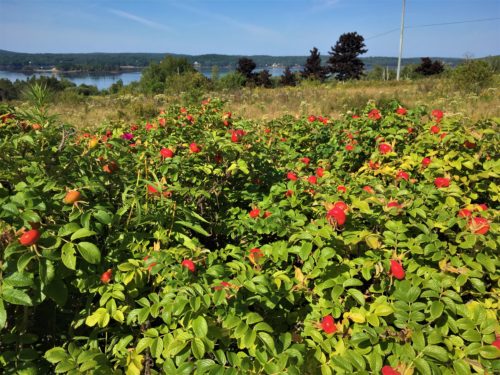
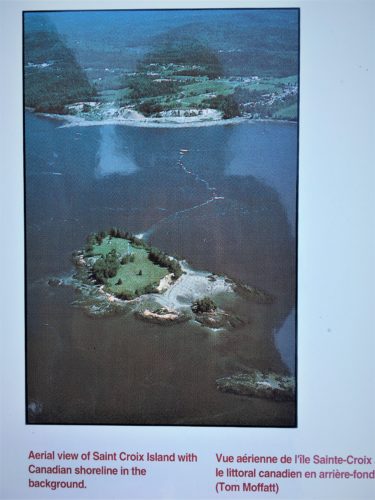
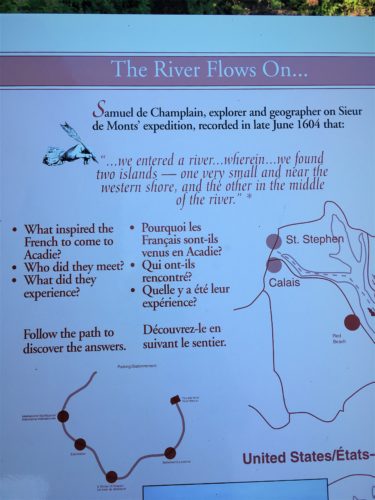

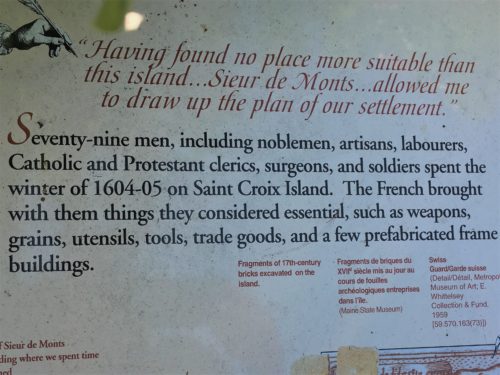
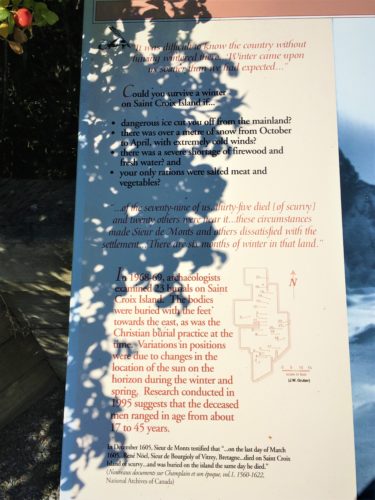
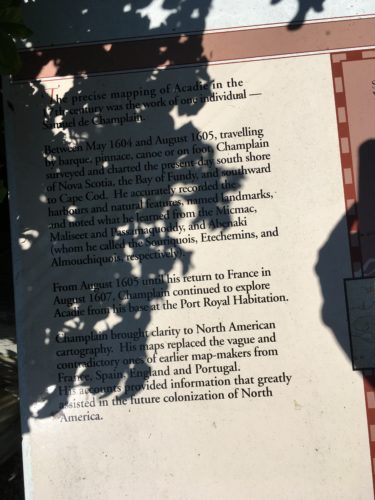
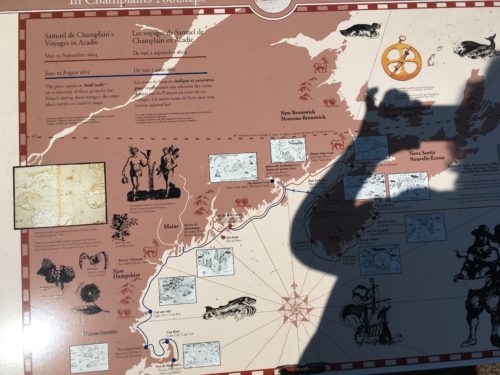
Next up was St. Stephen. This is just about as close as you can get to the USA without going through Customs. Just take a look at these pictures:
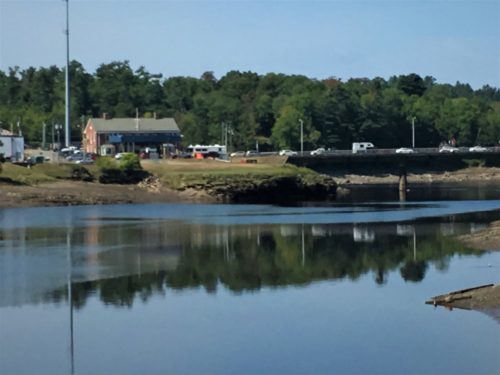
Yep. That’s Maine! That’s the Customs Building, and the cars waiting to cross.

So’s this!

This lighthouse was where the previous pictures were taken.
For lunch, we finally made it to a Tim Horton’s!
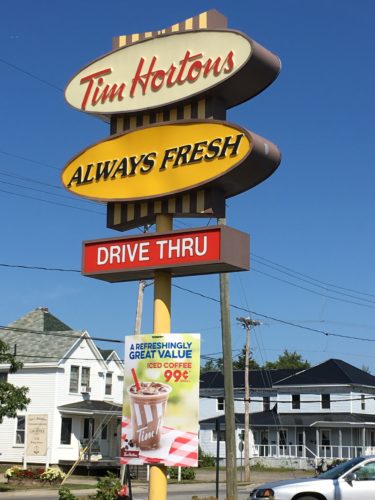
4,613 locations in Canada. I think we saw most of them!
We’ve seen a gazillion of these places all over Canada, but never went. It’s kinda like Panera in that they serve a few sandwiches and soups, but mostly it seems people come for the pastry and coffee/tea and to meet up. I’m not kidding about the number either. They are everywhere! Some small towns even have two! And they’re ALWAYS crowded, which is why we haven’t taken the time or made the effort to go. We just finally said, “This is our last opportunity to see what all the fuss is about!”
Eh. It was OK. The girl who waited on us was absolutely wonderful. We each ordered a sandwich – grilled chicken caesar wrap for me, ham and cheese for Blaine. They made the wrong sandwich for me. Not sure what it was, maybe buffalo chicken? Anyway, it was breaded and fried and spicy. Blaine’s bread was almost unedible. Soft and good on the inside, but tough on the out. He took the top off and just ate it open-faced. We also bought donuts. Now those were yummy!! Apple fritter for Blaine, custard for me.
We ate at a small park and watched Mainers go about their lives across the river. Then we fed Blaine’s bread to the couple of seagulls. Then some risked crossing the border to join the feast.
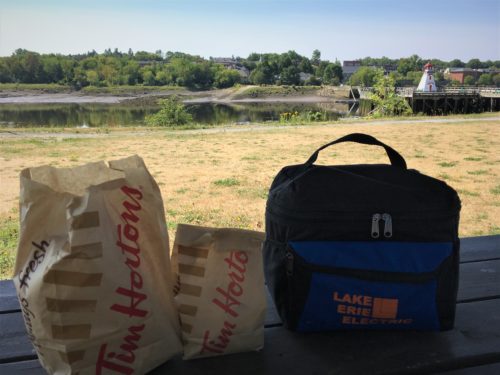
We hoped in the Jeep and after driving around a bit, we settled on visiting their well-known Ganong Chocolate Museum. You can’t visit the factory.
Quick, which North American candy maker was the first to sell chocolates in a heart-shaped box?
The answer: In 1930, it was Ganong Bros. Ltd., the innovative confectioner from St. Stephen, N.B. Founded in 1873, by brothers Gilbert and James Ganong. It is one of Canada’s oldest family businesses still in the hands of the founding family.
Gilbert Ganong, a sales representative for a U.S. line of crackers, started a grocery store in St. Stephen. He convinced his brother James, then a teacher, to join him. But the marketplace proved to have enough grocers. The Ganong brothers needed a differentiator.
They found their niche in novelty items hard to get on the Maine frontier: imported fruit, nuts and oysters — and homemade candy.
As the Ganongs began selling jelly beans, gumdrops and chocolate through New Brunswick and Nova Scotia, they realized they had to provide a higher-quality product and hired more experienced candy-makers from the U.S. and Europe. One “gum and jelly man” poached from the thriving candy industry in Baltimore oversaw production from 1889 to 1929; another invented the Pal-o-Mine chocolate bar (1920) that’s still produced almost 100 years later. (Pal-o-Mine is a chocolate bar in two parts….so you can share with your ‘pal’. 😊)
The brothers’ business plan included a strategy that wouldn’t sound out of place today. To keep children coming back for penny-candy, it was an article of faith that three new penny pieces had to be introduced every month and three older ones retired.
In the 1890s, Gilbert Ganong decided the company should focus mainly on chocolate.
~ Taken in part from an on-line article in financialpost.com.
They are now on their 5th generation running the business.
In 1888, they started embossing their chocolate by setting them on specially designed paper to dry. When you pick it up, Voila! Embossed on the bottom! And the women hand-dipped! As 4 still do today. It was pretty amazing to watch them, but I don’t think I’d like having people watch me work all day. FYI – it takes 3-5 years to train for this job!
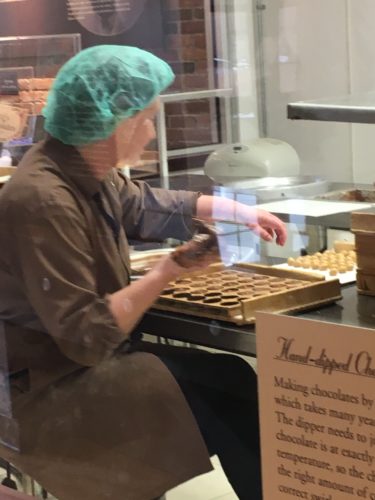
Today they were making peanut butter filled.
They put chocolate in the bottom, added a ball, then topped with chocolate and their practiced swirl on top.
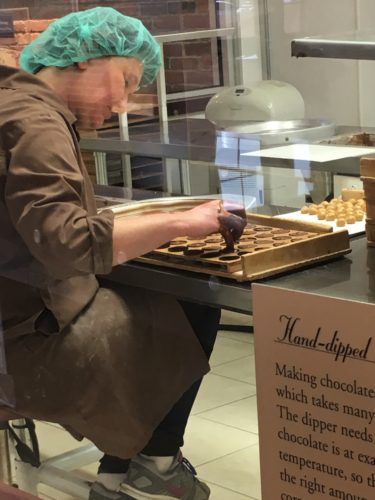
Here’s a video on how it’s done:
One of the more interesting characters was Arthur Ganong. Arthur took over the company in 1917 for the next 40 years and was known for eating 2-3 POUNDS of chocolate EVERY SINGLE DAY!!
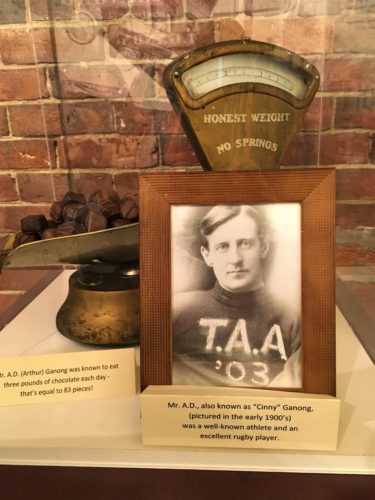
In 1957, Whidden (that’s his mother’s last name) took over. After a 14 year courtship, he finally married Eleanor Deacon, one of the company’s hand-dippers – and reportedly the fastest. How ‘sweet’ is that?
I guess a lot of people must love their chocolate. Blaine and I weren’t fans. They didn’t have that rich, chocolaty taste of London’s/Fanny Mays. They gave us a choice of two pieces each out of 4 choices, plus two pieces each of their original “Chicken Bones”. Now, THOSE were good! Created in 1885, they were hard, pink, heavily cinnamon-flavored candy on the outside with bittersweet chocolate inside. I would have bought some – for us – and hopefully (if they survived) to bring home, but they only make them at Christmastime. ☹
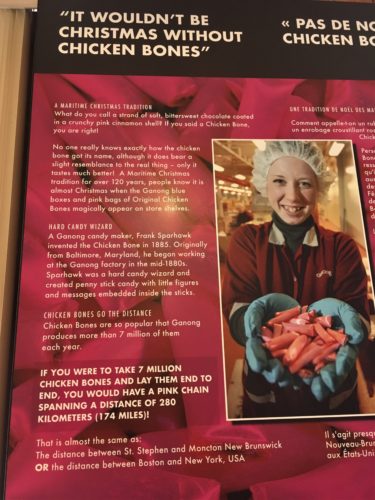
Chicken Bones!
Mmmm . . . . mmmm . . . . good!!!
A few tidbits we read in the quite extensive museum.
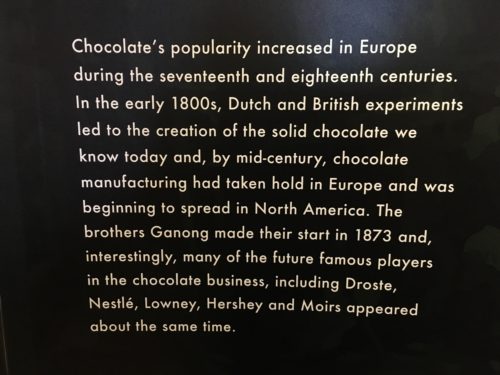
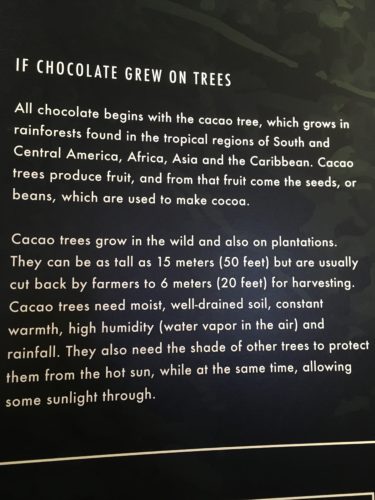

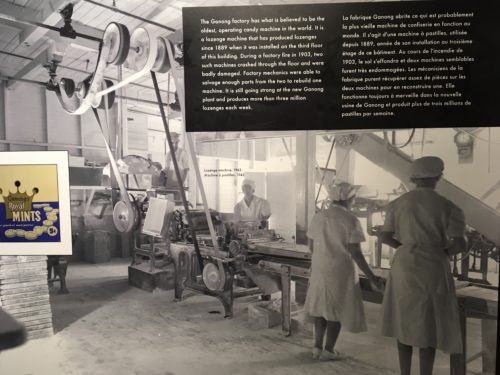
Very interesting museum!
Then, using the list the Visitors Center gave us, we walked around looking at and photographing (somewhat to Blaine’s consternation) historic homes. He just wasn’t as comfortable as I was taking pictures of peoples’ houses. My thought is – – if they don’t want pictures taken by tourists, then they shouldn’t buy these homes. Right?
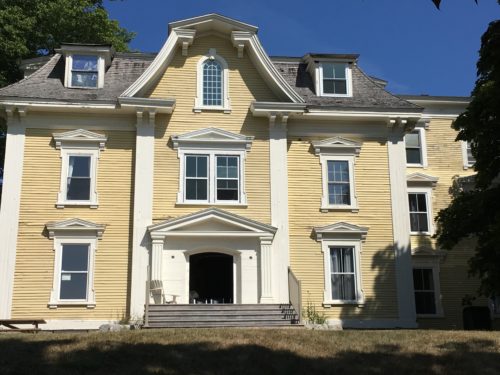
St. Stephen’s University
Built in 1866, it is the former home of Hugh Cullinen, a prominent dry goods merchant. It was a private residence until around 1900 when it was purchased by Ganong Bros. Ltd and was used as a boarding house for female workers who came from Newfoundland, England, Scotland and Wales to work in their world-renown candy factory.
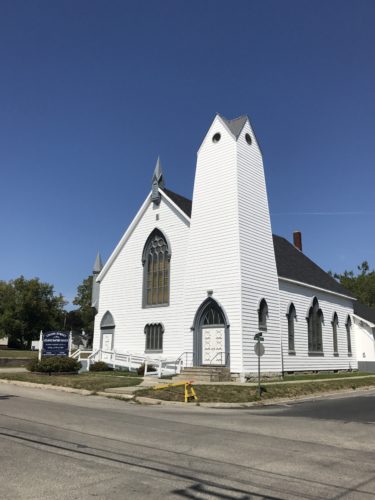
This church wasn’t on the tour, but we still liked it
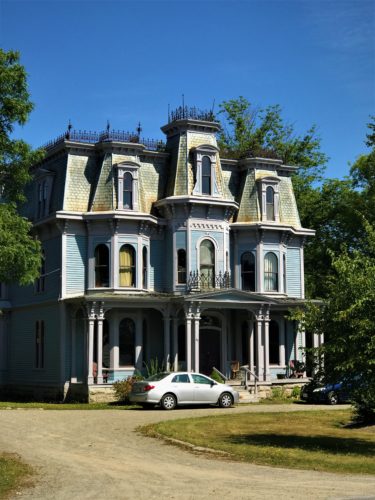
The Aadams Family Residence. : )
Actually, it’s the Todd Mansion.
Built from 1890-95. It was the home of William F. Todd who was engaged in the lumber trade, manufacturing and shkpping. He was also an agriculturist and raised thoroughbred horses.
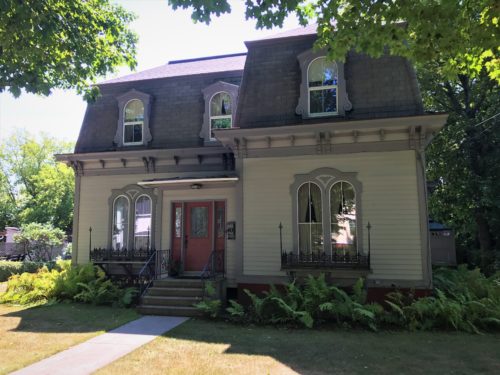
The Dyas House
Built around 1885 for Duncan Stuart.
That’s all I got . . .
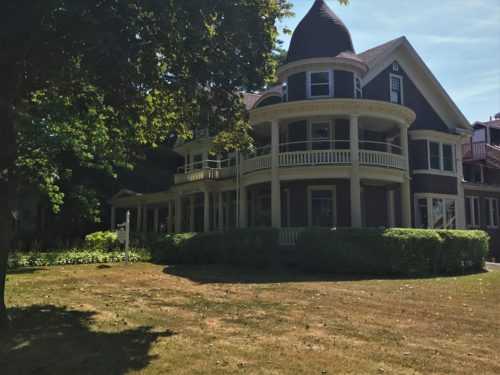
Lonicera Hall was built for James Porter, a shipbuilder with Porter Bros.
Gilbert & Maria Ganong, (co-founder of the chocolate company) bought it in 1903. The house faced the river, wharfs and the backs of buildings on Water Street.
Disliking the view, Ganong had the houses turned around with the facade on Union Street.
The house has been a residence for senior citizens since 1934.
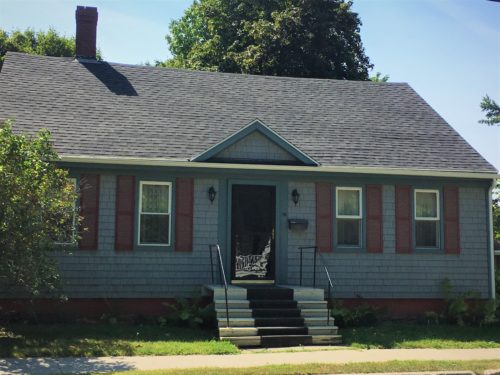
The Frink House
Built about 1800 for James Frink, son of Captain Nathan Frink who came with the Loyalists to St, Stephen in 1783.
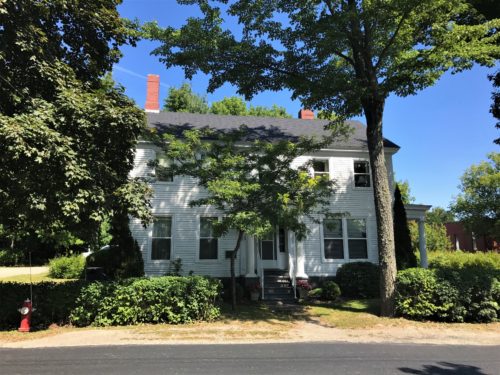
The Moore House
Built during 1833-35 for John Warren Moore and his wife, Mary.
He was an outstanding cabinetmaker and the grandson of William Moore, the Loyalist founder of Moores Mills, New Brunswick, in 1855. This is the best view we could get . . .
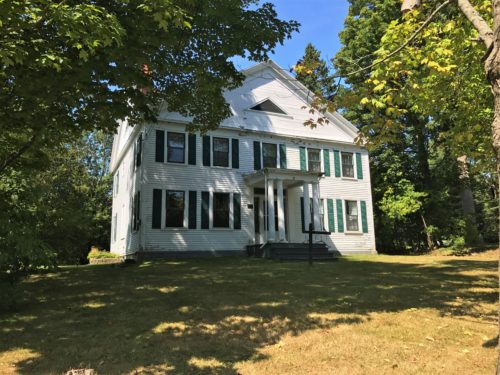
Hon. George Stillman Hill Home
Buit in 1838 for former New Brunswick MLA, the Hon. George Stillman Hill and his wife, Sarah.
The architecture has remained the same since the time it was built.
And it’s currently for sale. Just in case anyone’s interested . . .
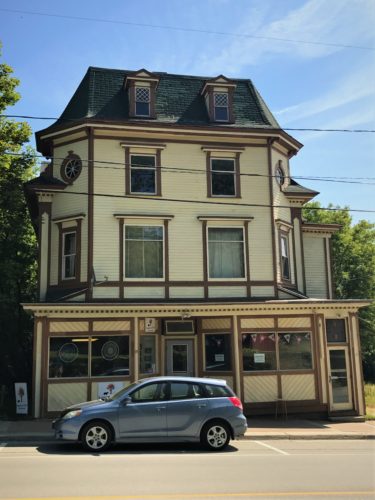
This was not on the tour, but it sure looks like it should be!
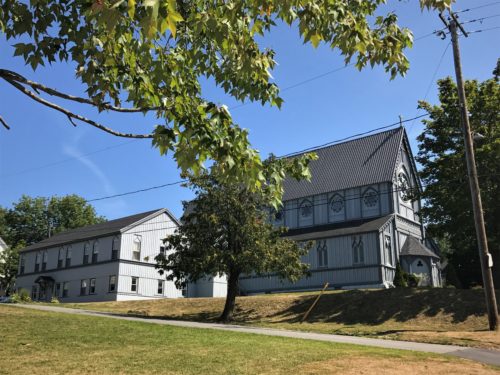
This wasn’t on the tour either, but we liked the look of the church.
Don’t know what “kind” it is.
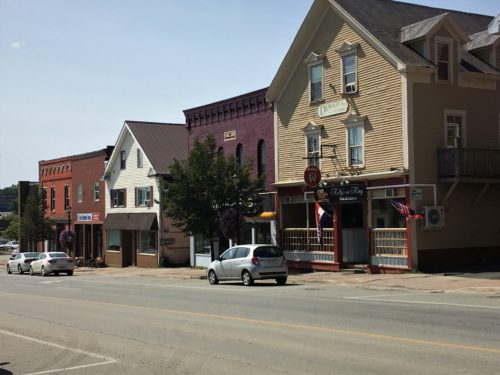
Just a look at the street
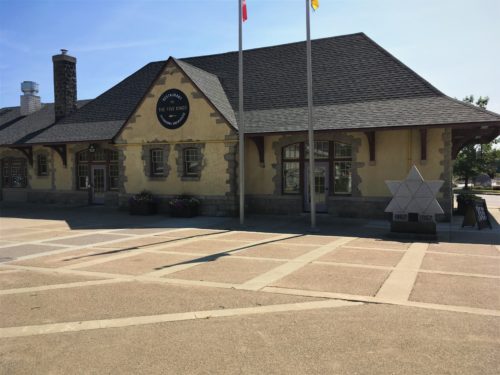
Last up – the Former Canadian Pacific Railway Station
It was built in 1929 to replace the old station that was erected following the fire of 1877.
It’s now a restaurant.
After that, we sought out and eventually found the 350-acre Ganong Nature Park. Donated by – – the Ganong family, of course. After so many hours of strolling, we were ready for some actual walking. (No illusions there would be actual hiking. We are on the coast, after all. It’s pretty flat around here.) Anyway, there was only 1 other car there and they left shortly after we arrived.
So we walked. And Blaine stepped on a thorny apple tree branch that penetrated his shoe. I didn’t even know there were apple trees that had thorns, but apparently this one does! Turns out, it was a wild crabapple tree. They have thorns similar to a Hawthorne. Ouch!! He was able to pull it out enough to continue walking, but he had to surgically remove it from his sole when we got home.
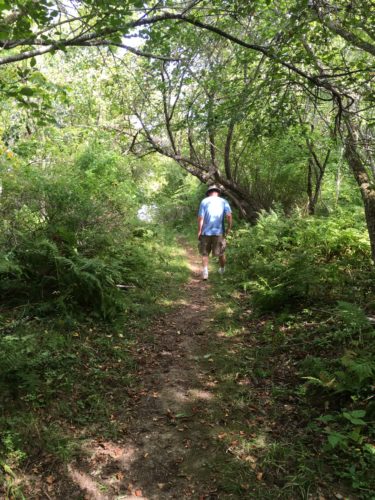
I actually took this picture just as he was putting his foot down – just before he leaped into the air.


The most interesting thing we saw (in my humble opinion) was a close up of hay bales. Pretty interesting how they seem to roll it up like a snowball! Then, somehow, they have just a couple of these thin strings holding them together.

The center of the bale
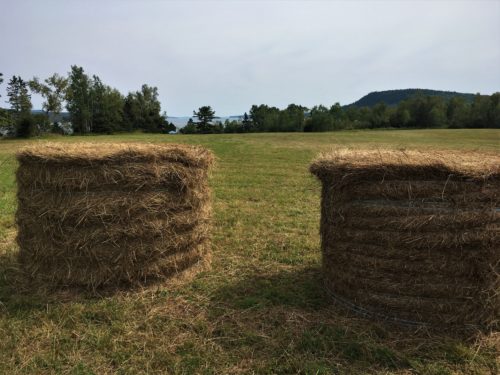
A fun, but very different day!
